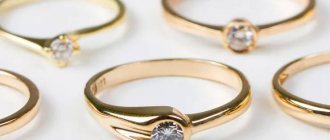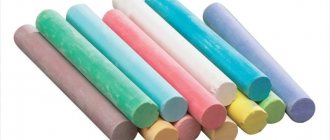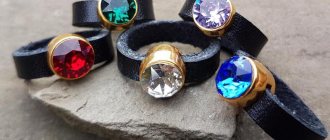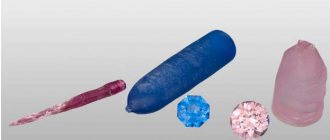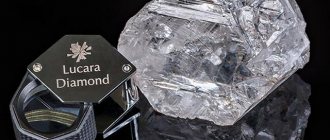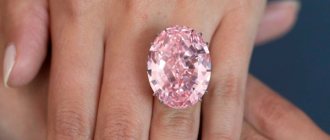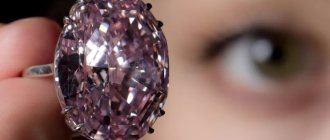A gem-quality diamond is one of nature’s most perfect creations. Just look at a pure diamond and you immediately understand: here it is, the Ideal! Man is proud and ambitious: he strives not only to copy the masterpieces of nature, but also to improve them.
A synthetic diamond is an absolute copy of a natural diamond, but without the disadvantages inherent in a natural mineral. To create technologies that make it possible to grow shining crystals in laboratory conditions, Humanity had to go a long way.
Yes, artificial diamonds are cheaper than their natural counterparts and have no investment value. However, hard labor is not used to extract them (have you seen the blockbuster “Blood Diamond”?), no damage is caused to nature, and jewelry with synthetic diamonds is available to a larger number of jewelry lovers.
How did synthetic diamonds come about?
Natural gem-quality diamonds are quite rare, and their extraction is a very expensive process. This leads to a very high price for these truly royal stones.
Diamonds are formed at enormous depths, under tremendous pressure, and then, during volcanic processes, are carried closer to the surface. They lie in giant kimberlite pipes, and to extract one diamond that is attractive from a jewelry point of view, you need to process hundreds of tons of rock.
The process of diamond formation stretches over hundreds of millions of years. Their reserves are gradually depleted, causing prices to rise steadily. That is why natural diamonds are of serious interest in terms of investment.
Attempts to create an artificial diamond have been made for a long time - already since the century before last, when the diamond formula was discovered. The enchanting stones turned out to be ordinary carbon, that is, close relatives of ordinary graphite and coal. And carbon acquired extraordinary hardness, transparency, brilliance and other features inherent in diamond thanks to a special cubic crystal lattice.
For a long time, the state of science and technology did not allow obtaining a diamond crystal under artificial conditions. Scientists periodically reported supposedly successful attempts to grow a diamond, but until the middle of the last century they were falsifications.
Gold earrings from the “Diamonds of Yakutia” collection (go to the SUNLIGHT catalog)
The palm in this regard belongs to the Swedish scientist Balzar von Platen - in 1953 he was the first to obtain a diamond under artificial conditions. And then the production technology was improved by American researchers.
The first artificial diamonds appeared on the market a few years later, scientists in other countries learned to grow diamonds in laboratories, but real success was still far away: synthetic minerals were not of high quality and could be used exclusively for technical purposes.
Over time, technology improved, and in 1970, Herbert Strong and Robert Wentorf from the American corporation General Electric finally managed to obtain gem-quality diamonds weighing up to one carat. But the technology they used turned out to be unprofitable: the cost of producing synthetic stones approaches the price of natural diamonds, or even exceeds it.
The largest gem-quality diamond known to date was grown in 2015. The purest diamond of 10.2 carats was cut from a blank of 32.26 carats. And its author was a company from St. Petersburg, New Diamond Technology.
Recently, information leaked to the press that Ukrainian scientists have surpassed Russian ones: they managed to obtain an artificial diamond weighing as much as 109 carats. Details of the technology have not yet been disclosed, so it is difficult to judge the veracity of this story.
At the moment, the leaders in the production of artificial diamonds are companies from the USA, Japan and Russia. And at the enterprises of the Celestial Empire, billions of carats of diamonds are riveted annually, but of very low quality, for technical needs.
Story
The history of synthetic diamond production began in 1797, when it was discovered that diamonds were made of carbon. At first, it was not possible to repeat the conditions accurately enough and the finished specimens did not have the necessary properties. The first successful experiment was recorded in 1926, but the technical process turned out to be quite complex and required improvements. In 1941, a new experimental series began, but World War II forced researchers to take a break.
In 1954, a breakthrough in the field of growing crystals occurred in Sweden - attempts to create diamonds were finally crowned with success. The laboratory managed to obtain high-quality small crystals that can be used in industry. By 1970, a method for producing large stones was developed and successfully implemented. This is how the synthetic diamond acquired jewelry value.
Over time, scientists learned to obtain in laboratories not only colorless, but also colored crystals. Nowadays blue, red, brown, and golden stones are made. Shades of blue come from boron inclusions, yellow shades come from nitrogen, and pink and brown shades come from distortion of the crystal lattice. Yellow synthetic minerals are easier to obtain than colorless ones, but creating blue ones is a significant challenge.
There are colored and colorless artificial diamonds
Name of artificial diamonds
Remember: an artificial diamond is called... Yes, that’s what it’s called: an artificial or synthetic diamond or diamond. There may be some trade names, but a diamond remains that by definition.
An artificially grown diamond has the same characteristics as its natural counterpart: it consists of pure carbon, is uncompromisingly hard, transparent, virtually impervious to harsh chemicals, and so on. Moreover, it is devoid of flaws inherent in its natural counterpart (cracks, stains and other defects).
Gold earrings with pearls and diamonds (go to the SUNLIGHT catalogue)
An artificial diamond is not an imitation or a fake, but a mineral of artificial origin. Even a jeweler who does not have spectrography equipment will not be able to distinguish it from a natural diamond, but what about the average person?
Man-made diamonds can also be certified, but they are assessed separately from their natural counterparts. In particular, the Russian 10-carat diamond was certified by the International Gemological Institute (IGI) in Hong Kong.
Ordinary people, and often sellers of some jewelry stores, often call all kinds of imitations artificial diamonds. But there is an abyss between the concepts of “synthetic diamond” and “imitation”!
Comparative characteristics of stones
Externally, it is very difficult to distinguish an artificial gem from a natural one. The imitation has no inclusions or defects, and has the same physical and chemical properties as the original.
But what distinguishes the imitation from the original is the timing and ways of obtaining the gem. Natural stones take millions of years to form in the natural environment, while copies are made in a matter of hours (1–2 mg/h) in laboratories.
You can see the differences using professional equipment. At a magnification of 80 times or more, the granular structure of the synthetic stone is visible. It is also known that they react to magnets. If you place a gem on a white sheet of paper and a white stripe is visible along the edge of the stone, then most likely it is artificial.
In a specialized laboratory, differences can be found using fluorescence analysis, Raman and infrared spectrometry, and spectroscopy.
Special devices have been developed for crystal identification: “DiamondSure” and “DiamondView”.
To continue the topic, watch the video:
cubic zirconia
Chemically, cubic zirconia is cubic zirconium. Cubic zirconia is the development of Soviet scientists who tried to obtain a stone similar to diamond in optical properties, but much less expensive.
They succeeded, and now cubic zirconias are used both in the production of optical equipment and for the manufacture of budget jewelry. Outwardly, they are similar to diamonds, but do not have the same play of color, are much softer and can become cloudy over time. But they are very inexpensive!
Moissanite
Here is the highest quality and most expensive diamond substitute on the modern market. But here there is a confusion of concepts. Moissanite is a mineral of natural (most likely cosmic) origin. Its crystals are extremely small and are not used in the jewelry industry.
But the artificial analogue of moissanite, carborundum, is much more widespread. It is used as inserts in jewelry. Carborundum approaches diamond in hardness (9.5 on the Mohs scale) and is significantly superior to it in its ability to withstand heat. It sparkles even brighter than a diamond!
Leucosapphire
Leucosapphire is a colorless corundum, often called white sapphire. White sapphires are much cheaper than their blue counterparts and often act as “diamonds” in jewelry in the mid-price segment. They practically do not become cloudy, exhibit outstanding hardness and transparency - in short, a very high-quality and inexpensive imitation.
Synthesizing corundum is much simpler and cheaper than obtaining it from artificial sources, which is why jewelers often work with leucosapphires of artificial origin.
Corundums are a glorious family that includes not only sapphires, but also rubies. These stones are almost identical in properties and chemical composition, with the exception of additives that determine color.
Rutile
Rutile is one of the cheapest and lowest quality diamond analogues. Chemically, it is titanium oxide; physically, it is a natural cloudy brown crystal. It is of little use for jewelry purposes.
However, in the middle of the last century, they learned to make rutile artificially, giving it the appearance of a diamond. At that time, this was a breakthrough in the jewelry industry, and jewelry with “titanium” or “rainbow stone” filled store shelves. But artificial rutile is quite soft and prone to clouding.
Steel earrings in gift packaging with Swarovski crystals (go to the SUNLIGHT catalog)
Fashion trends
The diamond has attracted people for a long time, which is why it was just as often imitated in the past as it is now. Previously, diamond was replaced with zircon, spinel, crystal, and rutile.
Synthetic stone analogues are an independent area of the jewelry market. The fashion for laboratory samples is growing from year to year in accordance with the ideology of responsible consumption. Since the production of laboratory crystals causes less harm to the environment, more and more buyers want to own such jewelry.
Rhinestones
This group includes a variety of imitations of diamonds created on the basis of glass. It is difficult to confuse an ordinary piece of glass with a noble stone, but jeweler Georg Strass managed to get closer to the ideal, at least visually. He developed a technology for applying metal powder to the glass surface, which made it possible to obtain a spectacular “diamond” shine.
The price of rhinestones varies widely: from a penny for Chinese-made trinkets to very expensive ones for the famous Swarovski crystals. However, the highest quality rhinestone is not even close to a diamond, and it scratches almost like ordinary glass.
Swarovski rhinestones have a unique composition, which is why they are so highly valued in the world. More than a century ago, the maestro developed a technology for the production of artificial crystal, which to this day remains secret and unsurpassed.
What are artificial diamonds made from?
At the moment, several technologies for the production of artificial diamonds are known. However, some are very complex and expensive, while others do not produce high quality diamonds.
Most often, diamonds are made from diamonds obtained using the following technologies:
- HPHT. HPHT (high pressure, high temperature) technology is classic and most widely used in production - graphite blanks are placed in a press and exposed to catalysts and high temperatures. Almost all technical diamonds and the lion's share of jewelry diamonds are made using this technology.
- CVD. During the chemical process, carbon is deposited from the gas mixture onto the seed, and high pressure is not used, which reduces the cost of the process. In this way, it is possible to obtain diamond films of a sufficiently large area. However, it is almost impossible to grow pure diamonds using this technology.
- Micro explosion. During directed microexplosions of carbon explosives, diamond dust is obtained, which is subsequently cooled and cleaned of graphite in nitric acid. The resulting product is used primarily for the production of abrasive materials.
- Impact of ultrasound. A fairly promising and inexpensive technology that does not require special conditions. The graphite suspension is subjected to ultrasonic cavitation, resulting in diamond crystals. The theoretical calculations are ideal, production promises to be very inexpensive, but here’s the problem: so far, diamonds obtained in this way are not of high quality, and the cost of the process is approaching the gold standard, HPHT technology.
HPHT technology was considered exhausted until a miracle happened. That same largest St. Petersburg diamond was made using HPHT. So there is every chance that time-tested technology will reach a new level.
Not only traditional colorless diamonds are artificially synthesized, but also their colored counterparts. The addition of nitrogen gives the diamond a lemon yellow color, boron gives it a piercing blue color, and irradiation can turn it green or red.
Heat, gas and pressure
Let's delve a little deeper into the technical process itself, and then find out how to get a diamond at home. Let’s master, so to speak, the profession of jewelry technologists in order to understand how complex and painstaking work it is.
Today, there are two methods for producing diamond in a laboratory.
- Diamond powder is placed in a special capsule, which dissolves under pressure and high temperatures. Then the crystallization process occurs, which takes up to several months. The result is diamonds with cubic facets, different from real ones not only in shape, but also in the growth process itself.
- The second method also involves the presence of a chamber filled with gas. When exposed to energy flows, gas molecules in a vacuum are destroyed, and carbon atoms settle inside the capsule in the form of plates. In a large enough chamber, dozens of diamonds can be grown in a few weeks. They will be flaky, with rough black edges. Sometimes stones with this method are obtained with a brown tint, but all impurities are well cleaned during the heat treatment process. Then the craftsmen begin cutting.
Where are synthetic diamonds used?
As mentioned above, an artificial diamond differs from a real one only in origin: from all other points of view, these minerals are identical. This means that the scope of application of artificial diamonds is exactly the same as that of natural stone.
The vast majority of artificial diamonds are manufactured specifically for technical needs. They are used in the production of cutting tools and abrasives, electronics and optical instruments, medical equipment and drilling rigs.
Gold ring with diamonds (go to the SUNLIGHT catalogue)
The best specimens, distinguished by their purity and large enough size, are turned into diamonds and adorned with rings, bracelets, pendants, earrings, brooches and other jewelry.
Astrological meaning
Since artificial diamonds are completely identical to natural ones, they can be worn by the same zodiac signs that correspond to a natural diamond. These are Fire stones, and they “love” mainly people of their element - Sagittarius, Leo and Aries. Among them, a diamond, including an artificial one, especially distinguishes Aries.
The wearing of diamond jewelry is contraindicated for the antipodes of Fire - the signs of the element of Water, especially Pisces.
| Zodiac sign | Compatibility |
| Aries | +++ |
| Taurus | + |
| Twins | + |
| Cancer | + |
| a lion | + |
| Virgo | + |
| Scales | +++ |
| Scorpion | + |
| Sagittarius | + |
| Capricorn | + |
| Aquarius | + |
| Fish | + |
(“+++” – fits perfectly, “+” – can be worn, “-” – is strictly contraindicated)
